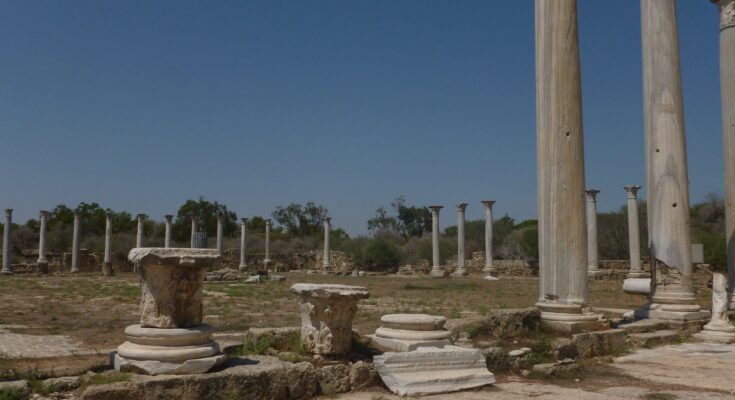A 4,000-year-old temple, thought to be the oldest sacred site in Cyprus thus far, has been discovered by a team of researchers from the University of Siena.
The temple, discovered in Erimi, was found in a region that used to house a craftsman’s workshop. According to archaeologist Luca Bombardieri, who spoke to the Italian news agency ANSA, this temple is the oldest sacred site on the island ever discovered.
The excavations of the temple have been overseen by Bombardieri for the last 15 years. This is in a collaborative effort with the Department of Antiquities of Cyprus and the Italian Ministry of Foreign Affairs.
Italians discover 4,000-year-old temple on Cyprus. 'Oldest ever found on island' says Bombardieri of Siena uni #ANSA
— Ansa English News (@ansa_english) July 6, 2024
“It is a large room where a big brazier illuminated a large monolith day and night.” According to Bombardieri, it is basically a “temple created before the temples we usually know,” built within a working environment. This shows “how complex and rich the lives of these people were—craftsmen who lived four millennia before us, just a few centuries before the first cities on the island were born,” the researcher said.
A secret at the temple in Cyprus
Bombardieri also shared that in this latest excavation mission, the skeleton of a young woman, roughly 20-years-old, was uncovered. The evidence apparently suggests that she was killed and her body was “sealed.” Perhaps this was to hide the crime and stop her ghost from “disturbing” the living.
Her killers fractured her cranium with a spear or heavy object and put her on the ground with a heavy stone on her chest, possibly in an attempt to keep her from moving. No valuable items or ceremonial objects were uncovered in close proximity. This seems to convey that no burial rites were afforded.
Italian researchers posit that this may be an ancient case of femicide, which may be related to the young woman being pregnant. The entrance of the tiny home was sealed meticulously, akin to a tomb. This incident dates back to the Bronze Age between 2,000 and 1,600 BC.
The femicide “may be connected to other cases recorded in the past in other parts of Cyprus,” suggests Bombardieri. The victims of femicide were typically young women, who were murdered and isolated from their families and communities.
With more than 1,000 square meters of workshops, storge areas, and large dyeing basins, the Erimi workshop temple filled (in its entirety) the top of a hill on the southern coast of Cyprus, close to the modern city of Limassol.
It was well-placed for the purpose it served, as it was well-ventilated and near fresh water. There was also fertile soil which was used to grow plants used to dye fabrics red, making them singular and valuable.
Just a short distance further down the hill, residences were close to each other, and the dead were buried at a reasonable distance. The wealthier ones were placed in large chamber tombs filled with grave goods, while those who were poorer were put in simple pits.



